However, it didn’t come soon enough for the 528 wolves that lost their lives to 3 years of reckless trophy hunting in WI. The leading kill method was trapping with a total of of 242 wolves killed in the 2013 and 2013 trophy hunts.
Wolves are baited by strong scents of dead animals and then caught in a steel leg hold trap.
From WDNR Wolf Hunting Regulations on trapping: http://dnr.wi.gov/files/pdf/pubs/wm/wm0538.pdf
Methods for Trapping
Cable Restraints
It is illegal to:
• set, place or operate any cable restraint for wolves except from Dec. 1 – Feb 28, 2015.
To be a legal set, the cable restraint must:
• be 10 ft. or less in length with a diameter of 3/ 32 inch or larger and be composed of multiple strands of galvanized aircraft cable wire;
• have cable stops that ensure that the portion of the cable which makes up the noose loop may not be longer than 48 inches when fully open or less than 8 inches when fully closed;
• be set with the bottom of the cable loop six to 14 inches above the surface, where the surface is soil, ice, crusted or packed snow or any other hard surface;
• include a reverse-bend washer lock with a minimum outside diameter of 11⁄4 inches and a 1,500 pound roller (or barrel) swivel that acts as the maximum opening cable stop, and;
• be staked in a manner that does not allow the restraint device to reach any part of a fence, rooted woody vegetation greater than 1⁄2 inch in diameter or any other immovable object or stake that could cause entanglement.
Traps
It is illegal to:
• set, place or operate steel-jawed foothold traps with a maximum jaw spread width of more than 7 inches from Oct. 15 – Nov. 30, except as a waterset or any foothold trap larger than 8 inches at any other time or as a waterset.
• place or use sight exposed bait consisting of feathers, animal flesh, fur, hide or entrails within 25 ft. of any trap, snare or cable restraint, or;
• set any trap, including cable restraints and snares, for which a trapping license is required, unless a metal tag* is attached.
Photographs of a steel trap and a wolf caught in one.
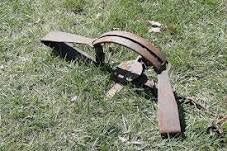
Is trapping humane?
According to trappers: “We trappers do cause pain and suffering to animals and apologize to no one” Dennis “Foothold” Schutz, former Vice President of the Montana Trappers Association (MTA)" Read more on this at Footloose Montana here: http://www.footloosemontana.org/
I began looking into what happens to the wolf’s pelt. I found several trappers bragging online about making a “wolf fur coat.” The following is from a fur trapper:
An Alaskan trapper explains how to make a fur coat (found on Yahoo) “have a full lenght wolf parka I can only wear when the temps are below 5F because the thing is so warm.”
“I am an Alaskan trapper. One wolf does not a coat make. Coats – wolf, coyote, fox, lynx, mink – are not made from the entire animal – they are made from the backs of the animals and only a few inches left and right of the backbone are used. One wolf – you get a sleeve.”
“Taxidermists take pelts and hides and turn them into realistic looking animals – they don't make coats and hats.”
“For coats and hats – you see out someone who does this, or, you can buy a pattern online to do it.”
“Hoods – are not made of the head. The hood usually has three parts – wolf, then two inches of sheared beaver to keep the end warm near your face – and the very outside portion is made of wolverine. When wolverine is used around the head and hands because the guard hears from them does not attract moisture when worn in the cold. There is quit a bit that goes into an animal coat – one of the reasons they are so expensive………. there are lots of places online that will take your pelts/hides and turn them into really nice coats, hats, gloves etc etc. The best ones – come out of Canada. Alaska and Arizona are the next two states with lots of places that do it.”
“These folks will tell you can make a wolf fur coat and how many hides to make what model of coat you want. Remember – the front, back, and sides of the coat must match!! This means you need to get 6-12 animals that look alike – not unusual to find a place where nobody has been hunting or trapping – and all the fox, coytoes, and wolves tend to be related and look alike in fur color. And you need to trap animals used for making gaments – because big holes and rips/tears dont keep you warm or look nice.”
When the wolf hunt was being legislatively constructed/written many wolf advocates were enraged by the methods used to kill a trapped wolf, that being bludgeoned by a club in the head so as not to ruin the pelt. It was removed and a trapped wolf could only be killed by a bullet.
It takes around 19 dead wolves to make a fur coat like the one Sandra Borch proudly wore out in public.
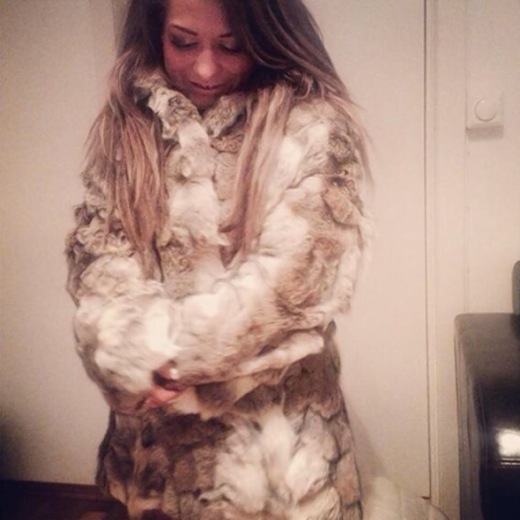
Norwegian politician sparks outrage by posting pic wearing real wolf fur coat online…Sandra Borch is being criticized by animal rights activists for uploading a photo of her furry winter wear to Twitter, but she refuses to apologize.BY LEE MORAN NEW YORK DAILY NEWS Wednesday, February 5, 2014 http://www.nydailynews.com/news/world/norwegian-politician-sparks-outrage-wearing-real-wolf-fur-coat-article-1.1602762
Wolf becomes part of the fashion industry for rich actors and actresses such as Joe Namath.
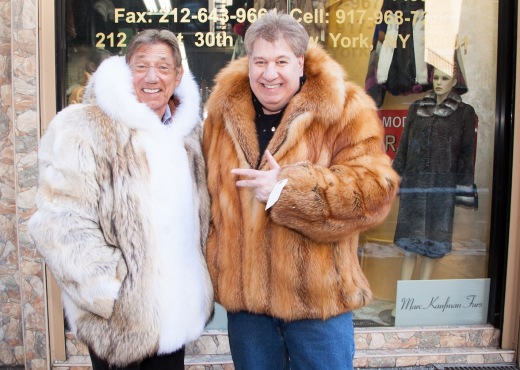
Joe Namath (shown here with Marc Kaufman) wearing his Marc Kaufman Furs custom coyote coat http://kaufmanfurs.net/index.php?page_id=41&slider=1

How much does it cost to be vain in Hollywood? This statement shows how depraved and morally bankrupt an individual can be.
Here is what the animals are worth “dead”
North American Fur Auctions September 2014 Fur Sale http://trappingtoday.com/trapping-todays-2014-15-fur-market-forecast/
Muskrat – $7.45
Fisher – $74.57
Marten – $49.92
Beaver – $12.42-14.22 (many unsold)
Otter – $55.40 (many unsold)
Raccoon – $13.65
Coyote – $23.36-72.34
Red Fox – $44.55
Here’s the real insanity: fur is considered a green renewable resource.
“Fur is a natural, renewable and sustainable resource. That means we only use part of what nature produces each year without depleting wildlife populations or damage the natural habitat s that sustain them. The goal is to maintain long-term ecological balance. ” Read more here: http://www.furisgreen.com/renewable.aspx
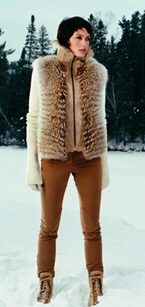
This fur is brought to you by modern wildlife agencies that promote trapping as a humane method of killing.
It takes about 19 wolf pelts to make a fur coat and each pelt costs around $400.00 a piece, adding up to cost per wolf jacket $7,000.00. Joe Namath proudly wore a wolf fur coat at one of the Super Bowls. Then there’s Nugent bragging about how wolf Jackets rock on his Facebook page. The fur fashion industry serves the rich and famous.
An endangered species, such as the wolf, can become a prized fur coat. That in its self makes a statement about America’s moral and ethics concerning how they treat an endangered species. Americans can buy and sell endangered species just as quickly as third world countries: Right along side of the Rhino horn trade, the ivory trade, raising the wolf to the same status as the endangered elephant and Rhino.

source


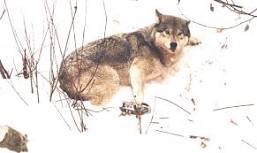
No comments:
Post a Comment